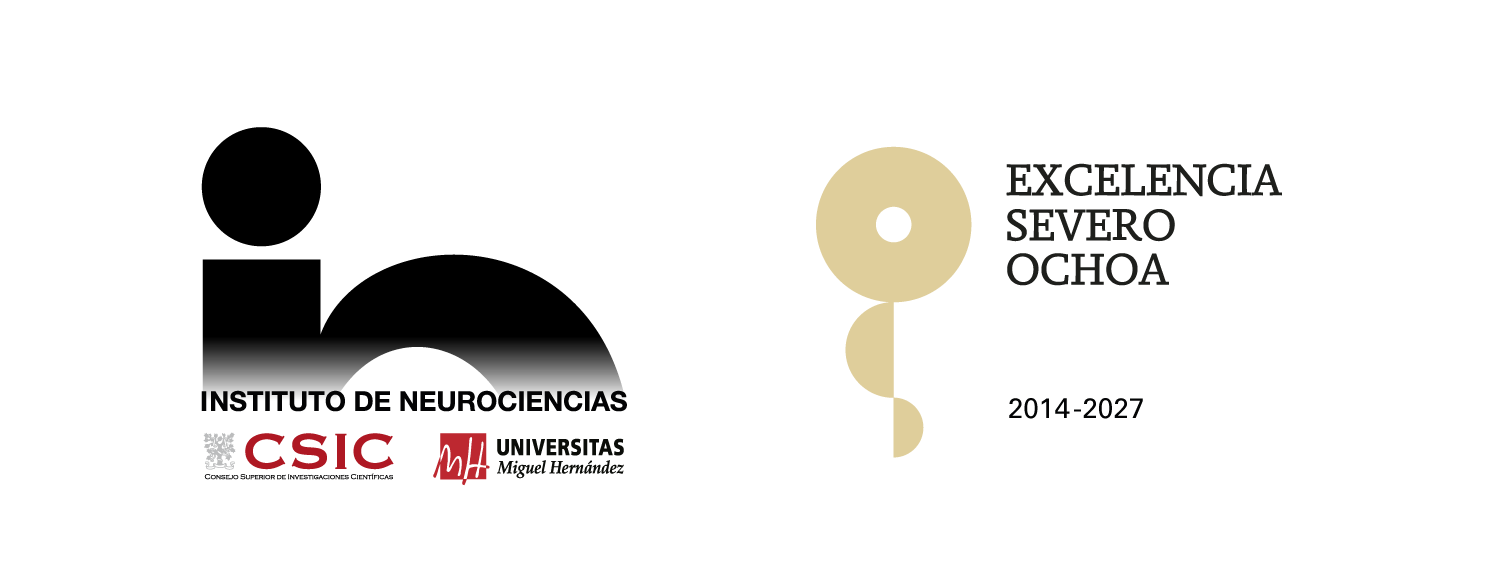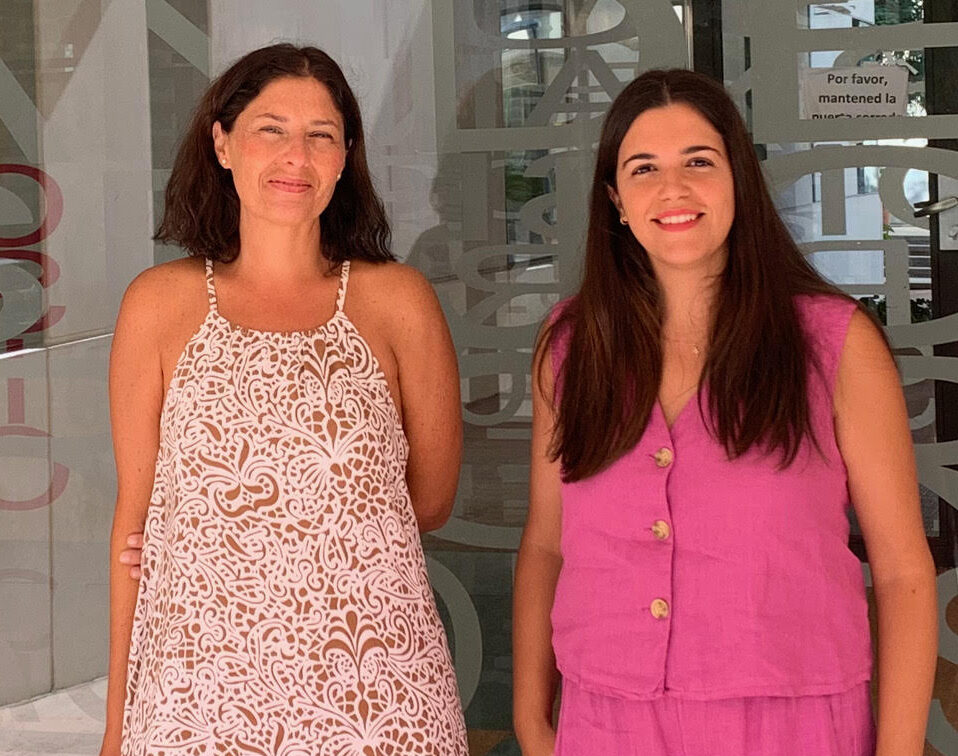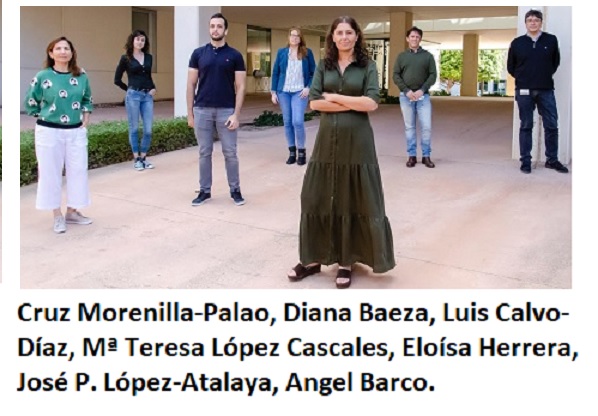Lines of investigation
The precise trajectory of different neuronal types during development is essential for the proper formation of functional circuits. We investigate the molecular and cellular mechanisms underlying axon pathfinding, focusing on how neurons interpret extracellular cues, make directional choices, and integrate into neural networks.
Our research explores the role of intrinsic neuronal factors, transcriptional and epigenetic regulators, and extrinsic signals that shape axonal navigation and define specific neuronal trajectories.A major focus of our work is deciphering how signaling pathways—particularly those involved in cytoskeletal remodeling and axon guidance—contribute to both developmental and regenerative processes.
By bridging developmental neuroscience with regenerative medicine, we aim to develop innovative therapeutic approaches to restore neuronal connectivity in the injured CNS.
Using a combination of in vivo and in vitro models, advanced imaging techniques, and molecular biology tools, we dissect the intricate signaling networks that control axon guidance and circuit assembly. Ultimately, our research seeks to pave the way for future clinical applications that could benefit patients with neurodegenerative diseases or CNS injuries.
Representative Publications
- Identification of lens-regulated genes driving anterior eye development. Verónica Murcia-Belmonte, Yanlin Liu, Sadia Shamsi, Sophie Shaw, Elaina Collie-Duguid, Eloisa Herrera, J. Martin Collinson, Neil Vargesson, Lynda Erskine. Developmental Biology. 2025 520: 91-107 https://doi.org/10.1016/j.ydbio.2025.01.004
- Novel insights into the mechanisms of growth cone dynamics during axon pathfinding. Isabel Pérez-Ferrer , Eloísa Herrera. Current Opinion in Neurobiology. 2025 93: art.number 103073 https://doi.org/10.1016/j.conb.2025.103073
- Restorative potential of ciliary body cells in a retinal ganglion cell degeneration model. Fernando Lucas-Ruiz, Marta Fernández-Nogales, Francisco J. Valiente-Soriano, Macarena Herrera, Francisco M. Nadal-Nicolás, Marta Agudo-Barriuso & Eloisa Herrera. Scientific Reports. 2025 15: art. number 15503 https://doi.org/10.1038/s41598-025-00283-0
- ARID1A-BAF coordinates ZIC2 genomic occupancy for epithelial-to-mesenchymal transition in cranial neural crest specification. Barnada SM, Giner de Gracia A, Morenilla-Palao C, López-Cascales MT, Scopa C, Waltrich FJ Jr, Mikkers HMM, Cicardi ME, Karlin J, Trotti D, Peterson KA, Brugmann SA, Santen GWE, McMahon SB, Herrera E*, Trizzino M*. Am J Hum Genet. 2024 111 (10) :2232-2252 https://doi.org/10.1016/j.ajhg.2024.07.022
- Proper Frequency of Perinatal Retinal Waves Is Essential for the Precise Wiring of Visual Axons in Nonimage-Forming Nuclei. Negueruela S, Morenilla-Palao C, Herrera M, Coca Y, Florez-Paz D, López-Cascales MT, Gomis A, Herrera E*. J Neurosci. 2024 44 (40): e1408232024 https://doi.org/10.1523/JNEUROSCI.1408-23.2024
- Development of the Binocular Circuit. Herrera E, Chédotal A, Mason C. Annual Review of Neuroscience. 2024 47: 303-322 (Review) https://doi.org/10.1146/annurev-neuro-111020-093230
- A Retino-retinal Projection Guided by Unc5c Emerged in Species with Retinal Waves Murcia-Belmonte V, Coca Y, Vegar C, Negueruela S, de Juan Romero C, Valiño AJ, Sala S, DaSilva R, Kania A, Borrell V, Martinez LM, Erskine L, Herrera E Current Biology 2019 29(7):1149 https://doi.org/10.1016/j.cub.2019.02.052
- The peripheral eye: A neurogenic area with potential to treat retinal pathologies? Fernandez-Nogales M, Murcia-Belmonte V, Chen HY, Herrera E Progress in Retinal and Eye Research 2019 68:110 https://doi.org/10.1016/j.preteyeres.2018.09.001
- The Ciliary Margin Zone of the Mammalian Retina Generates Retinal Ganglion Cells Marcucci F, Murcia-Belmonte V, Wang Q, Coca Y, Ferreiro-Galve S, Kuwajima T, Khalid S, Ross ME, Mason C, Herrera E Cell Rep 2016 17(12):3153 https://doi.org/10.1016/j.celrep.2016.11.016
- Zic2-Dependent Axon Midline Avoidance Controls the Formation of Major Ipsilateral Tracts in the CNS Escalante A, Murillo B, Morenilla-Palao C, Klar A, Herrera E Neuron 2013 80(6):1392 https://doi.org/10.1016/j.neuron.2013.10.007
- Restorative potential of ciliary body cells in a retinal ganglion cell degeneration model. Fernando Lucas-Ruiz, Marta Fernández-Nogales, Francisco J. Valiente-Soriano, Macarena Herrera, Francisco M. Nadal-Nicolás, Marta Agudo-Barriuso & Eloisa Herrera. Scientific Reports. 2025 15: art. number 15503 https://doi.org/10.1038/s41598-025-00283-0
- Novel insights into the mechanisms of growth cone dynamics during axon pathfinding. Isabel Pérez-Ferrer , Eloísa Herrera. Current Opinion in Neurobiology. 2025 93: art.number 103073 https://doi.org/10.1016/j.conb.2025.103073
- Identification of lens-regulated genes driving anterior eye development. Verónica Murcia-Belmonte, Yanlin Liu, Sadia Shamsi, Sophie Shaw, Elaina Collie-Duguid, Eloisa Herrera, J. Martin Collinson, Neil Vargesson, Lynda Erskine. Developmental Biology. 2025 520: 91-107 https://doi.org/10.1016/j.ydbio.2025.01.004
- A highly conserved neuronal microexon in DAAM1 controls actin dynamics, RHOA/ROCK signaling, and memory formation. Patryk Poliński, Marta Miret Cuesta, Alfonsa Zamora-Moratalla, Federica Mantica, Gerard Cantero-Recasens, Carlotta Viana, Miguel Sabariego-Navarro, Davide Normanno, Luis P. Iñiguez, Cruz Morenilla-Palao, Patricia Ordoño, Sophie Bonnal, Jonathan D. Ellis, Raúl Gómez-Riera, Hugo Fanlo-Ucar, Dominic S. Yap, María Martínez De Lagrán, Álvaro Fernández-Blanco, Cristina Rodríguez-Marin, Jon Permanyer, Orsolya Fölsz, Eduardo Dominguez-Sala, Cesar Sierra, Diana Legutko, José Wojnacki, Juan Luis Musoles Lleo, Maria Pia Cosma, Francisco José Muñoz, Benjamin J. Blencowe, Eloisa Herrera, Mara Dierssen & Manuel Irimia Nature Communications. 2025 16, Article number: 4210 (2025) https://doi.org/10.1038/s41467-025-59430-w
- EphA4 mediates ephrinB1-dependent adhesion in retinal ganglion cells. Murcia-Belmonte V, Chauvin G, Coca Y, Escalante A, Klein R, Herrera E. Journal of Neuroscience. 2025 45(4): e0043242024 https://doi.org/10.1523/JNEUROSCI.0043-24.2024
- Analysis of Microtubule Polymerization During Axon Outgrowth Using Fluorescently Labeled Microtubule Plus-End Tracking Proteins. Pérez-Ferrer I., Sánchez-Huertas C. Book: "Neuronal Morphogenesis" 2024 chapter: pp 235-249 https://10.1007/978-1-0716-3969-6
- Transplantation of dorsal root ganglia overexpressing the NaChBac sodium channel improves locomotion after complete SCI. Sonia Hingorani, Guillem Paniagua Soriano, Carlos Sánchez Huertas, Eva María Villalba Riquelme , Eric López Mocholi, Beatriz Martínez Rojas, Ana Alastrué Agudo, Sebastián Dupraz, Antonio Vicente Ferrer Montiel, Victoria Moreno Manzano. Molecular Therapy. 2024 32(6): p1739-1759 https://doi.org/10.1016/j.ymthe.2024.03.038
- Development of the Binocular Circuit. Herrera E, Chédotal A, Mason C. Annual Review of Neuroscience. 2024 47: 303-322 (Review) https://doi.org/10.1146/annurev-neuro-111020-093230
- Proper Frequency of Perinatal Retinal Waves Is Essential for the Precise Wiring of Visual Axons in Nonimage-Forming Nuclei. Negueruela S, Morenilla-Palao C, Herrera M, Coca Y, Florez-Paz D, López-Cascales MT, Gomis A, Herrera E*. J Neurosci. 2024 44 (40): e1408232024 https://doi.org/10.1523/JNEUROSCI.1408-23.2024
- ARID1A-BAF coordinates ZIC2 genomic occupancy for epithelial-to-mesenchymal transition in cranial neural crest specification. Barnada SM, Giner de Gracia A, Morenilla-Palao C, López-Cascales MT, Scopa C, Waltrich FJ Jr, Mikkers HMM, Cicardi ME, Karlin J, Trotti D, Peterson KA, Brugmann SA, Santen GWE, McMahon SB, Herrera E*, Trizzino M*. Am J Hum Genet. 2024 111 (10) :2232-2252 https://doi.org/10.1016/j.ajhg.2024.07.022
- Editorial – Friedrich Bonhoeffer (1932-2021). Klein, R., Wilkinson, D., Herrera, E. Neuroscience 2023 508: 1-2 https://doi.org/10.1016/j.neuroscience.2022.11.019
- CyclinD2-mediated regulation of neurogenic output from the retinal ciliary margin is perturbed in albinism. Slavi, N., Balasubramanian, R., Lee, M.A., Liapin, M., Oaks-Leaf, R., Peregrin, J., Potenski, A., Troy, C.M., Ross, M.E., Herrera, E., Kosmidis, S., John, S.W.M., Mason, C.A. Neuron 2023 111(1): 49-64.e5 https://doi.org/10.1016/j.neuron.2022.10.025
- Transcriptional Control of Axon Guidance at Midline Structures. Herrera E, Escalante A Front Cell Dev Biol. 2022 10: art 840005 https://doi.org/10.3389/fcell.2022.840005
- CBP and p300 Jointly Maintain Neural Progenitor Viability but Play Unique Roles in the Differentiation of Neural Lineages. González-Martínez, R., Márquez-Galera, A., Del Blanco, B., López-Atalaya, J.P., Barco, A., Herrera, E. Cells 2022 11(24): 4118 https://doi.org/10.3390/cells11244118
- Multiomic Analysis of Neurons with Divergent Projection Patterns Identifies Novel Regulators of Axon Pathfinding Fernández-Nogales, M., López-Cascales, M.T., Murcia-Belmonte, V., Escalante, A., Fernández-Albert, J., Muñoz-Viana, R., Barco, A., Herrera, E. Advanced Science 2022 9 (29): art. 2200615 https://doi.org/10.1002/advs.202200615
- Bilateral visual projections exist in non-teleost bony fish and predate the emergence of tetrapods Vigouroux RJ, Duroure K, Vougny J, Albadri S, Kozulin P, Herrera E, Nguyen-Ba-Charvet K, Braasch I, Suárez R, Del Bene F, Chédotal A Science 2021 372(6538):150 https://doi.org/10.1126/science.abe7790
- Non-productive angiogenesis disassembles ASS plaque-associated blood vessels Alvarez-Vergara MI, Rosales-Nieves AE, March-Diaz R, Rodriguez-Perinan G, Lara-Ureña N, Ortega-de San Luis C, Sanchez-Garcia MA, Martin-Bornez M, Gómez-Gálvez P, Vicente-Munuera P, Fernandez-Gomez B, Marchena MA, Bullones-Bolanos AS, Davila JC, Gonzalez-Martinez R, Trillo-Contreras JL, Sanchez-Hidalgo AC, Del Toro R, Scholl FG, Herrera E, Trepel M, Körbelin J, Escudero LM, Villadiego J, Echevarria M, de Castro F, Gutierrez A, Rabano A, Vitorica J, Pascual A Nat Commun 2021 12(1):3098 https://doi.org/10.1038/s41467-021-23337-z
- With the Permission of Microtubules: An Updated Overview on Microtubule Function During Axon Pathfinding Sánchez-Huertas C, Herrera E Front Mol Neurosci 2021 14:759404 https://doi.org/10.3389/fnmol.2021.759404
- A Zic2-regulated switch in a noncanonical Wnt/betacatenin pathway is essential for the formation of bilateral circuits Morenilla-Palao C, López-Cascales MT, López-Atalaya JP, Baeza D, Calvo-Díaz L, Barco A, Herrera E Sci Adv 2020 6(46):eaaz8797 https://doi.org/10.1126/sciadv.aaz8797
- New techniques for studying neurodevelopment Escalante A, González-Martínez R, Herrera E Fac Rev 2020 9:17 https://doi.org/10.12703/r/9-17
- A Retino-retinal Projection Guided by Unc5c Emerged in Species with Retinal Waves Murcia-Belmonte V, Coca Y, Vegar C, Negueruela S, de Juan Romero C, Valiño AJ, Sala S, DaSilva R, Kania A, Borrell V, Martinez LM, Erskine L, Herrera E Current Biology 2019 29(7):1149 https://doi.org/10.1016/j.cub.2019.02.052
- Cranial Pair II: The Optic Nerves Herrera E, Agudo-Barriuso M, Murcia-Belmonte V Anatomical Record 2019 302(3):428 https://doi.org/10.1002/ar.23922
- Guidance of retinal axons in mammals Herrera E, Erskine L, Morenilla-Palao C Semin Cell Dev Biol 2019 85:48 https://doi.org/10.1016/j.semcdb.2017.11.027
- The peripheral eye: A neurogenic area with potential to treat retinal pathologies? Fernandez-Nogales M, Murcia-Belmonte V, Chen HY, Herrera E Progress in Retinal and Eye Research 2019 68:110 https://doi.org/10.1016/j.preteyeres.2018.09.001
- Wiring the Binocular Visual Pathways Murcia-Belmonte V, Erskine L Int Journal of Molecular Sciences 2019 20(13):3282 https://doi.org/10.3390/ijms20133282
- Rodent Zic Genes in Neural Network Wiring Herrera, Eloisa ZIC FAMILY: EVOLUTION, DEVELOPMENT AND DISEASE 2018 1046:209 https://doi.org/10.1007/978-981-10-7311-3_11
- Roof Plate-Derived Radial Glial-like Cells Support Developmental Growth of Rapidly Adapting Mechanoreceptor Ascending Axons Kridsada K, Niu J, Haldipur P, Wang Z, Ding L, Li JJ, Lindgren AG, Herrera E, Thomas GM, Chizhikov VV, Millen KJ, Luo W Cell Rep 2018 23(10):2928 https://doi.org/10.1016/j.celrep.2018.05.025
- Shh-ushing Midline Crossing through Remote Protein Transport Herrera E, Sitko AA, Bovolenta P Neuron 2018 97(2):256 https://doi.org/10.1016/j.neuron.2018.01.001
- Cerebellar Transplantation: A Potential Model to Study Repair and Development of Neurons and Circuits in the Cerebellum Sotelo, C Contemporary Clinical Neuroscience 2017 21:465 https://doi.org/10.1007/978-3-319-59749-2_22
- Time-Lapse Imaging and Cell Tracking of Migrating Cells in Slices and Flattened Telencephalic Vesicles Murcia-Belmonte V, Exposito G, Herrera E Curr Protoc Neurosci 2017 79:3.31.1 https://doi.org/10.1002/cpns.24
- Genetic maps and patterns of cerebral cortex folding de Juan Romero C, Borrell V Curr Opin Cell Biol 2017 49:31 https://doi.org/10.1016/j.ceb.2017.11.009
- Zic-Proteins Are Repressors of Dopaminergic Forebrain Fate in Mice and C elegans Tiveron MC, Beclin C, Murgan S, Wild S, Angelova A, Marc J, Core N, de Chevigny A, Herrera E, Bosio A, Bertrand V, Cremer H J Neurosci 2017 37(44):10611 https://doi.org/10.1523/JNEUROSCI.3888-16.2017
- The Ciliary Margin Zone of the Mammalian Retina Generates Retinal Ganglion Cells Marcucci F, Murcia-Belmonte V, Wang Q, Coca Y, Ferreiro-Galve S, Kuwajima T, Khalid S, Ross ME, Mason C, Herrera E Cell Rep 2016 17(12):3153 https://doi.org/10.1016/j.celrep.2016.11.016
- Zic2 Controls the Migration of Specific Neuronal Populations in the Developing Forebrain Murillo B, Ruiz-Reig N, Herrera M, Fairen A, Herrera E J Neurosci 2015 35(32):11266 https://doi.org/10.1523/JNEUROSCI.0779-15.2015
- Fine-tuned SRF activity controls asymmetrical neuronal outgrowth: implications for cortical migration, neural tissue lamination and circuit assembly Scandaglia M, Benito E, Morenilla-Palao C, Fiorenza F, del Blanco B, Coca Y, Herrera E, Barco A Sci Rep 2015 5:17470 https://doi.org/10.1038/srep17470
- Connecting the Retina to the Brain Erskine L, Herrera E ASN Neuro 2014 6(6):1759091414562107 https://doi.org/10.1177/1759091414562107
- Zic2-Dependent Axon Midline Avoidance Controls the Formation of Major Ipsilateral Tracts in the CNS Escalante A, Murillo B, Morenilla-Palao C, Klar A, Herrera E Neuron 2013 80(6):1392 https://doi.org/10.1016/j.neuron.2013.10.007
- Uncoupling of EphA/ephrinA signaling and spontaneous activity in neural circuit wiring Benjumeda I, Escalante A, Law C, Morales D, Chauvin G, Muca G, Coca Y, Lopez-Bendito G, Kania A, Martinez-Otero L, Herrera E J Neurosci 2013 33(46):18208 https://doi.org/10.1523/JNEUROSCI.1931-13.2013
- Shh/Boc signaling is required for sustained generation of ipsilateral projecting ganglion cells in the mouse retina Sanchez-Arrones L, Nieto-Lopez F, Sanchez-Camacho C, Carreres MI, Herrera E, Okada A, Bovolenta P J Neurosci 2013 33(20):8596 https://doi.org/10.1523/JNEUROSCI.2083-12.2013
- Transcription Factor Foxd1 Is Required for the Specification of the Temporal Retina in Mammals Carreres MI, Escalante A, Murillo B, Chauvin G, Gaspar P, Vegar C, Herrera E J Neurosci 2011 31(15):5673 https://doi.org/10.1523/JNEUROSCI.0394-11.2011
- Zic2 regulates the expression of Sert to modulate eye-specific refinement at the visual targets Garcia-Frigola C, Herrera E EMBO J 2010 29(18):3170 https://doi.org/10.1038/emboj.2010.172

 Español
Español



